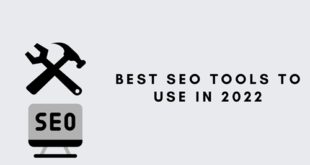A newcomer to eCommerce has a long and interesting journey to turn the idea into a successful business.
How to attract customers, how to communicate with them correctly, how to turn a casual store visitor into a regular customer? Each of these challenges is a potential opportunity for business growth and increased sales.
But the first thing to think about is ways to increase traffic to your eCommerce website. Needless to say, the more visitors come to your place, the higher the likelihood of shopping. Naturally, this traffic should be targeted, then the percentage of conversion of visitors to buyers will be high.
Improving organic traffic being valuable is a complicated task. It demands weighing many aspects, like, your industry, your eCommerce website niche and individual performance.
So, what is the most influential way to boost sales or to promote the eCommerce website? How to boost the organic traffic of the online store without depending only on Paid advertising or PPC?
The answer lies in SEO for eCommerce websites.
Table of Contents
- What is SEO in eCommerce?
- Is SEO important for eCommerce?
- Why does an online store need SEO promotion?
- How do I increase organic traffic on my eCommerce website?
- Use the right keywords
- Research your competitors
- Consider your URL structure
- Create a sitemap
- Make internal linking
- Optimize your product card
- Make responsive design
- Reduce your download speed
- Get backlinks
- Concluding Remarks
What is SEO in eCommerce?
SEO for an online store is a set of measures to make an online store more visible in search engine results (SERP). The higher the position, the more often people who are looking for products sold in the online store go to the site.
You can get a lot of conversions all at once with PPC advertising, but SEO is much more profitable in the long run. In addition, ad blockers and ad blindness can reduce the effectiveness of ads, so you should definitely do a search engine optimization of your eCommerce website.
SEO for eCommerce usually includes optimization of titles, descriptions on product cards and category pages, meta tags, internal linking, website navigation structure to improve user experience and the technical side of the website.
Is SEO important for eCommerce?
Undoubtedly, SEO is very much important for eCommerce websites. Customers are the key to your online store’s success: the more visitors you bring to your website, the more purchases they will make and the more profit you get.
So the question is, how can internet users find your online store?
And that’s when SEO starts to play. Obviously, you can spread the word about your store through social media. Facebook and Instagram work like a miracle and assure traffic.
But still, what do you do when you need to search for something on the Internet? You are watching this on Google! You go through a few pages that show up first, and you rarely even go to the second page, third and subsequent pages.
Therefore, as an eCommerce website owner, you want your website to appear as high as possible on the search engine results page. When done perfectly, the eCommerce strategies assist you to rank higher and the web pages will offer you the right solution according to the user search intent. The optimizing eCommerce websites generate a free or ongoing source of high converting traffic to the website.
Why does an online store need SEO promotion?
What do customers do when they need a product or service? Many of them visit Google. Look for options, reviews, testimonials and other information to help you make a rational decision.
If an online store does not rank in the search results, it loses access to people interested in buying. The products are for sale, but how can customers find them?
This is where the role of SEO in e-commerce comes in. It allows you to reach your target audience without paying for ongoing advertising. As soon as the user lands on the website, they can be offered quality products and useful content.
If you are optimizing your online store just for visitors, you are hurting your business. Search engine optimization is necessary to remove the first hurdle to new customer acquisition: driving visitors to your website.
How do I increase organic traffic on my eCommerce website?
To get more traffic on an eCommerce website, SEO is essential. Each of the recommendations listed below gives a small plus and will make the promotion strategy more effective.
Use the right keywords
Yes, keywords still matter. You should not overload titles and product descriptions with them, but they should be present on the page. The main keyword should be specified in the title tag, h1 heading, product description, subheadings, and photo descriptions. You should also use LSI queries – they help Google understand what your page is about.
Analyze the keyword before using it. Find out how often people search for it, how competitive it is in PPC advertising, and what people are looking for when they use this query. Search volume shows how much interest customers have in a particular keyword. The larger the volume, the more clicks the website will receive if it reaches the top for this request.
You can check the frequency of keywords in Google Keyword Planner. Each service gives statistics on the respective search engine, but in experience, Wordstat shows more accurate numbers than Google’s planner.
You can start your search with a general query that matches your products, and then look at more specific query options and similar phrases.
Cost per click (CPC) shows how much advertisers pay per click when buying contextual advertising on search. A high CPC indicates high competition. If your chosen keyword is too expensive, consider alternative searches.
Research your competitors
Find 10 well – known online retailers that sell products similar to yours, and thoroughly, research what methods they use to promote their store. There is absolutely no need to spend sleepless nights reinventing the wheel when someone has already done it.
Be smarter – make adjustments to ready-made solutions to get your own original promotion method. However, at the initial stage, you can not rack your brains in search of fresh ideas but use proven methods.
It is better to analyze everything that your competitors are doing: do they have groups in social networks, what do they publish in them, do they have a blog and what articles they write, do they use contextual advertising, for which keywords can be found in the search. By the way, owners of large online stores periodically generously share their success stories and interesting techniques in articles. Your task is to decide what methods of driving traffic you can use for yourself right now.
Consider your URL structure
The URL structure for online stores can be confusing. All sorts of tags and strange codes come into play. Here’s an example URL that needs some optimization:
Home-> Categories-> Subcategories-> Products
Not small websites subcategories can be skipped. Make sure each product only belongs to one category. Likewise, the URL structure should be clear and consistent:
Good URL: magazin.com/brand/kategoriya/nazavanie-tovara
Invalid URL: magazin.com/brand/3842098437
For example, if you’re selling PlayStation 4 consoles, the URL should look like this:
magazin.com/sony/pristavki/playstation-4
or
magazin.com/pristavki/sony-playstation-4
Try to keep the URL not too long, up to 160 characters.
Create a sitemap
There are two types of sitemaps: XML and HTML. An online store needs both types, each with its own role. HTML maps are usually created to make it easier to navigate a resource. XML maps are created for search engines to index pages.
An XML map is a list marked up with XML so that search engines can quickly decipher the content. From an SEO point of view, an XML map serves as an invitation to crawl a website but is not a guarantee that the pages will be indexed. It is rather a recommendation for search engines which pages you would like to add to the index.
The XML map is generated by the developers and ideally automatically updated on a weekly basis to improve page indexability. HTML maps look much clearer. They are intended to make it easier for visitors to navigate the store. Essentially, an HTML sitemap is another form of internal linking. You shouldn’t expect huge benefits in terms of SEO, but you must take care of its creation.
Make internal linking
Internal links serve two main purposes:
- Improving SEO by showing robots how pages relate to each other;
- The increase in the time visitors spend on the website, which, in turn, also affects SEO.
For internal linking, blocks of similar and recently viewed products, breadcrumbs, recommended kits, etc. are used.
Optimize your product card
Product cards are the lifeblood of a business, so you need to focus on optimizing them. Most online store owners simply post a few lines of text about each product and add some template photos or videos.
You need more content on your product pages for Google to find them more useful and rank them higher. Here are the specific things to work on:
- Name of product
The product name is important. Most of the time, it is used in headings (title tag and h1 tag) and page URL. Be sure to add your generic keyword to your product title to get you relevant traffic.
For example, if you have T-shirts in your assortment, add the word T-shirt to the title. This way, the keyword will appear in titles and URLs as well.
- Optimizing photos
Photos are an important part of a product card. Imagine yourself as a buyer for a second. Are you more likely to order from a site with crisp, high-resolution photos than from a website with blurry or no images?
But photos are important not only for users but also for search engine promotion. Optimizing images start with the correct file name.
Do not add images named IMG0001.jpg, instead use the product name and/or keyword such as Rajat-iPhone-7-plus.jpg.
If there are several photos, alternative names of products can be used as titles, which can be used by users to search.
Besides, when adding a photo, you must include the product name and keyword in the description (ALT) of the image. Result? Now photos can be ranked in image search in Google, or on the main search page as media content.
- Video
Build confidence while shopping online by adding a video to your product page. A video can represent basic information about the product (for example, a promo video), instructions for use, or reviews from people who have already used the product.
Posting your video to third-party sites like YouTube or Facebook can be a great way to expand your reach and attract new users to your product. For example, DIY training videos can show people how to create something amazing using your products. If they like the idea, they are more likely to buy related products.
- Customer Reviews
Reviews are a great way to increase customer confidence in a product, so if you are selling quality items, be sure to allow reviews. Bad reviews aren’t always bad either.
Think about it – if you have a more expensive product with good reviews in your assortment and a cheaper one with average reviews, then people are more likely to purchase a more expensive product, which will lead to an increase in the average check in the online store.
- Help content
Do people ask questions about your products? Of course, they do. Having answers to frequently asked questions about specific products in the product cards will positively affect both search engine ranking and conversion.
However, if the required information is not available, shoppers may leave the website in search of another website with answers, and will likely make a purchase there.
Having a page with general questions and answers is also a good idea in terms of search engine promotion of an online store. On it, you can talk about security policy, delivery and return conditions, payment methods, etc.
Make responsive design
Mobile traffic is growing day by day and users are increasingly ordering products using mobile devices. Using responsive design for an online store can not only affect user experience (UX) but also improve your search engine rankings. Mobile usability is one of the ranking factors in Google.
Reduce your download speed
Loading speed is another ranking factor in both desktop and mobile. The faster it opens, the higher the website will be in the search results. In addition, long download times significantly reduce the conversion to sales.
How to slow down the download speed?
Remove everything unnecessary from the website that affects the download speed. For example, a huge background image that is mostly covered by the main content, or unnecessary plugins and scripts slow down the website, which ultimately leads to loss of profit.
Get backlinks
Backlinks are another ranking factor that search engines use to determine the position of a site in the search results. The more backlinks from quality websites, the more authoritative the website becomes.
Buying links on exchanges or with a direct agreement is a popular way to get backlinks, but it violates the rules of Google, and if you abuse the purchase or do it incorrectly, the online store may be subject to sanctions.
Also, avoid the so-called. link runs, when links are massively posted on unmoderated websites – you risk being sanctioned and losing even the traffic that you already have. A safer method is to host guest posts on third-party websites. You write useful material for third-party websites, and in return, they put a backlink on you.
Concluding Remarks
eCommerce SEO is essential for every online store. Fundamentally, it can be said that the more the potential customers visit the website, the more the odds one becomes the payees. The properly-optimized website can rank higher in the leading search engines and it converts to more sales and traffic.
Also, if you are generating revenue from PPC or Adwords platforms, giving some proportion of the monthly budget in eCommerce SEO is assuredly the best deal to crack!
Hopefully, this article has given you the desired information. If anywhere you got stuck to understand then ask us in the comment section below.
Thanks for reading!
 CoalesceIdeas Web and graphic design ideas for inspiration
CoalesceIdeas Web and graphic design ideas for inspiration




